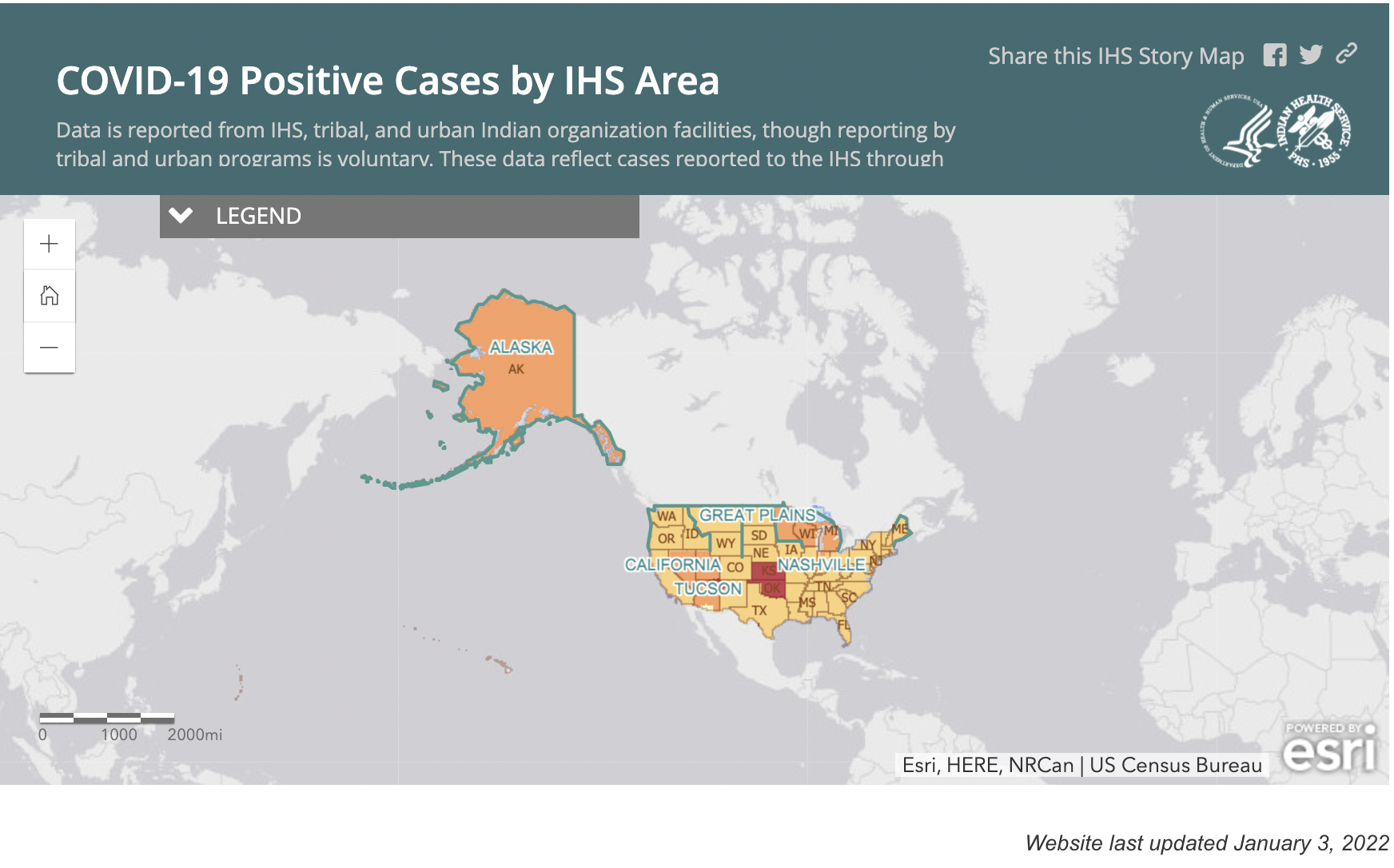
- Details
- By Jenna Kunze
With the new year comes a new wave of COVID across Indian Country, and much of the country in general. Indian Health Service (IHS) Chief Medical Officer Dr. Loretta Christensen wrote to Native News Online that all 12 service areas have seen “a significant increase” of positive COVID-19 cases in the last few weeks. The positivity rate more than tripled from the day after Christmas through the new year, compared to the week leading up to the holiday, IHS data shows.
From Jan. 1, the seven day average positivity rate was 17.6% across all IHS service areas, up from the previous week’s rate of 13.7%.
The vast majority of positive cases are attributed to the Omicron variant, the Center for Disease Control and Prevention says.
“This increase is likely due to a combination of people gathering for the holidays and how transmissible the [O]micron variant is,” Christensen wrote. “The CDC expects that anyone with [O]micron infection can spread the virus to others, even if they are vaccinated or don’t have symptoms.”
Self-reported data to the IHS indicates red zones—or high positivity rates—in Oklahoma, Kansas, and on the Navajo Nation.
Shawn Terry, the Secretary of Health for the Muscogee Nation in Oklahoma, told Native News Online that the tribal health department is seeing an uptick in both tests administered and positive cases across the reservation.
Want more Native News? Get the free daily newsletter today.
Over the last two weeks, health facilities in the Oklahoma City Area area reported 22,206 tests administered, with 3,154 positive results. That's with more than half the population in the area being vaccinated.
“This week alone, our positivity has been as high as 32 percent within our boundaries,” Terry said. The tribe is currently operating a monoclonal antibody infusion center—a treatment for high risk COVID patients that can prevent the virus from entering cells in a patient’s body and limit the amount of the virus within their body. “The demand for treatment has increased exponentially within the last ten days,” Terry reported.
Healthcare officials urge getting vaccinated, boosted, wearing a mask in public places, and staying home if you’re feeling sick.
“The recent emergence of the [O]micron variant has further emphasized the importance of vaccination, boosters, and prevention efforts needed to protect against COVID-19,” Christensen wrote. “These are important because we know that COVID-19 has disproportionately impacted the American Indian and Alaska Native population. We need everyone to do their part to protect themselves, their families, their elders, and their communities.”
If you have not already been vaccinated or received your booster shot, you can find more information on where to do so here.
More Stories Like This
Artificial Intelligence Impacts the Art and Science of Dentistry – AI Part 2Feds Announce $50 Billion to States for Rural Health, Tribes Barely Mentioned in Awards
Community Safety Alert Issued Over Out-of-State “Treatment” Transfers
Language is Medicine: Navajo Researcher Tackles Speech Delays in Native Communities
Artificial Intelligence Impacts the Art and Science of Dentistry - Part 1

